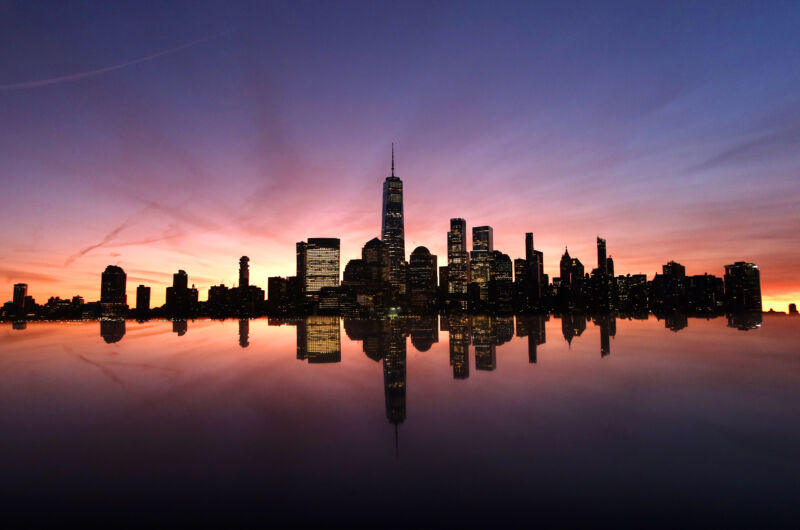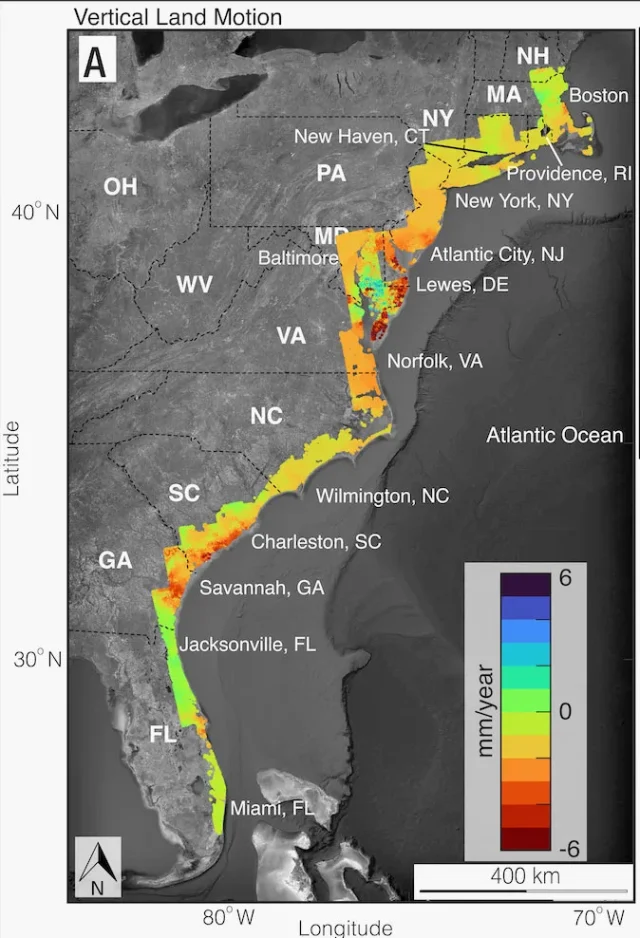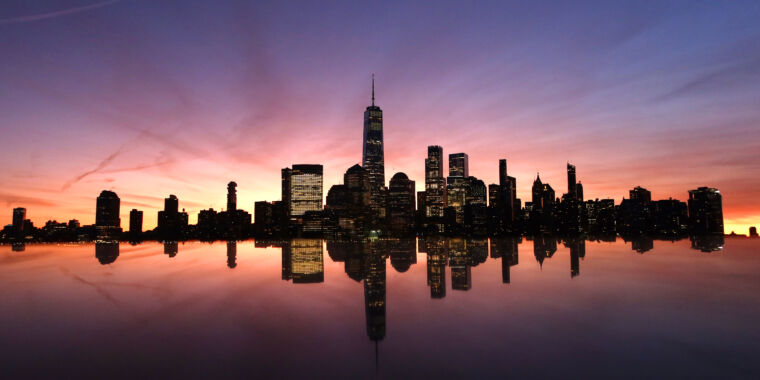East Coast land continues to collapse at a worrying rate
susceptible to subsidence —
It’s steadily sinking or subsiding, which is destabilizing levees, roads, and airports.

Enlarge / Lower Manhattan and One World Trade Center in New York City are reflected on a monument as the sun rises on December 22, 2023, as seen from Jersey City, New Jersey.
Unless you’re sinking into quicksand, you might assume that the land beneath your feet is solid and unmoving. In actual fact, your part of the world may well be undergoing “subsidence,” which is where the ground collapses as sediments settle or when people over-extract groundwater. New York City is sinking, too, due to the weight of all those buildings pushing on the ground. In extreme cases, like in California’s agriculturally intensive San Joaquin Valley, elevations have plummeted not by inches, but by dozens of feet.
Last year, scientists reported that the US Atlantic Coast is dropping by several millimeters annually, with some areas, like Delaware, notching figures several times that rate. So just as the seas are rising, the land along the eastern seaboard is sinking, greatly compounding the hazard for coastal communities.

In a follow-up study just published in the journal PNAS Nexus, the researchers tally up the mounting costs of subsidence—due to settling, groundwater extraction, and other factors—for those communities and their infrastructure. Using satellite measurements, they have found that up to 74,000 square kilometers (29,000 square miles) of the Atlantic Coast are exposed to subsidence of up to 2 millimeters (0.079 inches) a year, affecting up to 14 million people and 6 million properties. And over 3,700 square kilometers along the Atlantic Coast are sinking more than 5 millimeters annually. That’s an even faster change than sea-level rise, currently at 4 millimeters a year. (In the map below, warmer colors represent more subsidence, up to 6 millimeters.)

With each millimeter of subsidence, it gets easier for storm surges—essentially a wall of seawater, which hurricanes are particularly good at pushing onshore—to creep farther inland, destroying more and more infrastructure. “And it’s not just about sea levels,” says the study’s lead author, Leonard Ohenhen, an environmental security expert at Virginia Tech. “You also have potential to disrupt the topography of the land, for example, so you have areas that can get full of flooding when it rains.”
A few millimeters of annual subsidence may not sound like much, but these forces are relentless: Unless coastal areas stop extracting groundwater, the land will keep sinking deeper and deeper. The social forces are relentless, too, as more people around the world move to coastal cities, creating even more demand for groundwater. “There are processes that are sometimes even cyclic, for example in summers you pump a lot more water so land subsides rapidly in a short period of time,” says Manoochehr Shirzaei, an environmental security expert at Virginia Tech and coauthor of the paper. “That causes large areas to subside below a threshold that leads the water to flood a large area.” When it comes to flooding, falling elevation of land is a tipping element that has been largely ignored by research so far, Shirzaei says.
In Jakarta, Indonesia, for example, the land is sinking nearly a foot a year because of collapsing aquifers. Accordingly, within the next three decades, 95 percent of North Jakarta could be underwater. The city is planning a giant seawall to hold back the ocean, but it’ll be useless unless subsidence is stopped.
This new study warns that levees and other critical infrastructure along the Atlantic Coast are in similar danger. If the land were to sink uniformly, you might just need to keep raising the elevation of a levee to compensate. But the bigger problem is “differential subsidence,” in which different areas of land sink at different rates. “If you have a building or a runway or something that’s settling uniformly, it’s probably not that big a deal,” says Tom Parsons, a geophysicist with the United States Geological Survey who studies subsidence but wasn’t involved in the new paper. “But if you have one end that’s sinking faster than the other, then you start to distort things.”
East Coast land continues to collapse at a worrying rate Read More »
